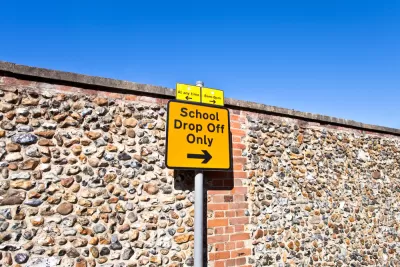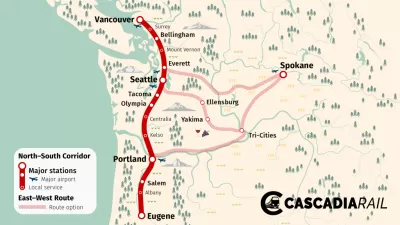Seattle schools are often forced to reduce their playground space in favor of parking and circulation for private cars, but altering the city code could change that.

An analysis of recent retrofits at two Seattle schools shows that "if the Seattle School District had complied with the City requirement for private car storage in the recent retrofits at Magnolia and Queen Anne Elementaries it would have obliterated all outdoor play space and a significant amount of indoor education space." Margaret McCauley argues that city code requiring Seattle schools to replace playground and activity space with surface parking and car traffic doesn't address the needs of bike riders and pedestrians and takes away valuable outdoor space.
With low-income families less likely to own cars, devoting "scarce land resources to circulation for privately owned cars is inequitable." McCauley writes that "encouraging a dispersed traffic pattern, where families (excluding the medically fragile of course) park remotely in the neighborhood and walk the final block with their kids, produces a safer setting" and encourages friendlier interactions than expecting families to "be able to easily drive to and from the school at arrival and departure times."
According to McCauley, a city code change that prioritizes "safe routes to school instead of a requirement for on-site parking and drop-off zones" would "allow Seattle’s School Traffic Safety Committee to focus efforts on safe routes to school rather than parking plans that are counterproductive to safety."
FULL STORY: Seattle City Code Requires We Pave Over Playgrounds, But We Could Change That

Alabama: Trump Terminates Settlements for Black Communities Harmed By Raw Sewage
Trump deemed the landmark civil rights agreement “illegal DEI and environmental justice policy.”

Study: Maui’s Plan to Convert Vacation Rentals to Long-Term Housing Could Cause Nearly $1 Billion Economic Loss
The plan would reduce visitor accommodation by 25% resulting in 1,900 jobs lost.

Planetizen Federal Action Tracker
A weekly monitor of how Trump’s orders and actions are impacting planners and planning in America.

Waymo Gets Permission to Map SF’s Market Street
If allowed to operate on the traffic-restricted street, Waymo’s autonomous taxis would have a leg up over ride-hailing competitors — and counter the city’s efforts to grow bike and pedestrian on the thoroughfare.

Parklet Symposium Highlights the Success of Shared Spaces
Parklets got a boost during the Covid-19 pandemic, when the concept was translated to outdoor dining programs that offered restaurants a lifeline during the shutdown.

Federal Homelessness Agency Places Entire Staff on Leave
The U.S. Interagency Council on Homelessness is the only federal agency dedicated to preventing and ending homelessness.
Urban Design for Planners 1: Software Tools
This six-course series explores essential urban design concepts using open source software and equips planners with the tools they need to participate fully in the urban design process.
Planning for Universal Design
Learn the tools for implementing Universal Design in planning regulations.
Caltrans
Smith Gee Studio
Institute for Housing and Urban Development Studies (IHS)
City of Grandview
Harvard GSD Executive Education
Toledo-Lucas County Plan Commissions
Salt Lake City
NYU Wagner Graduate School of Public Service





























